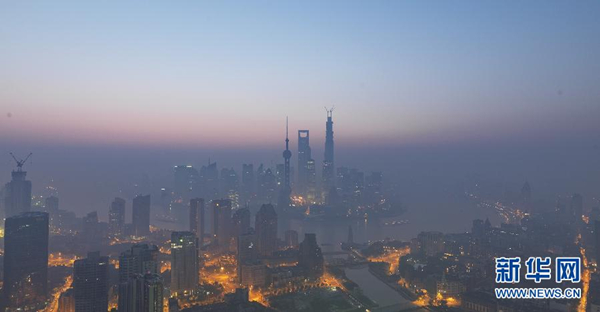Shanghai base for delta air pollution alert center
 0 Comment(s)
0 Comment(s) Print
Print E-mail Shanghai Daily, April 14, 2014
E-mail Shanghai Daily, April 14, 2014
Shanghai residents will soon receive more accurate air quality reports with the launch of a new calculating system.
Air Quality Index (AQI) calculations will be partly based on an hourly figure for PM2.5 -- tiny particles especially harmful as they can get deep into the respiratory system -- instead of a 24-hour average PM2.5 figure used at present.
 |
|
An aerial view of Shanghai as dense smog hit the city in November 2013. [File photo] |
Already approved by central government, the new system will be introduced very soon, Zhang Quan, director of Shanghai Environmental Protection Bureau, said yesterday.
Currently, the AQI, which is reported hourly, is calculated based on levels of six pollutants: PM2.5, PM10, sulfur dioxide, nitrogen dioxide, ozone and carbon monoxide.
While readings for four of these are presently updated hourly, PM2.5 and PM10 figures are an average for the previous 24 hours, in line with national standards.
Zhang also said Shanghai will need approval from central government if it intends to introduce an Air Quality Health Index (AQHI), already in use in Hong Kong.
AQHI provides health advice and alerts for groups particularly sensitive to air pollution -- such as the very young, the elderly and those with respiratory problems -- depending on levels of pollutants.
"Shanghai's AQI system gives advice to people to reduce short-term exposure to air pollution through adjusting activities but AQHI is more detailed," Zhang said.
In another air pollution initiative, a joint air quality alert center covering Shanghai and neighboring provinces Zhejiang, Jiangsu and Anhui is to be located in the city.
Joint alerts are intended to ensure that the Yangtze River Delta can take quick, coordinated action to tackle air pollution.
"The meteorological and environment departments of Shanghai and the three provinces are working together closely on the air pollution joint alert system," said Zhang.
A coordinated effort to fight pollution across the Yangtze River Delta was launched in January, and also includes a unified standard for energy conservation and emission cuts to be achieved.





